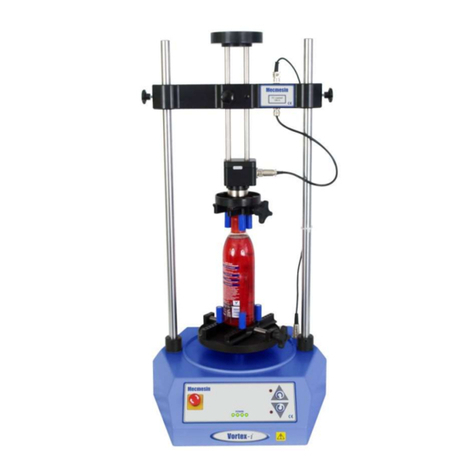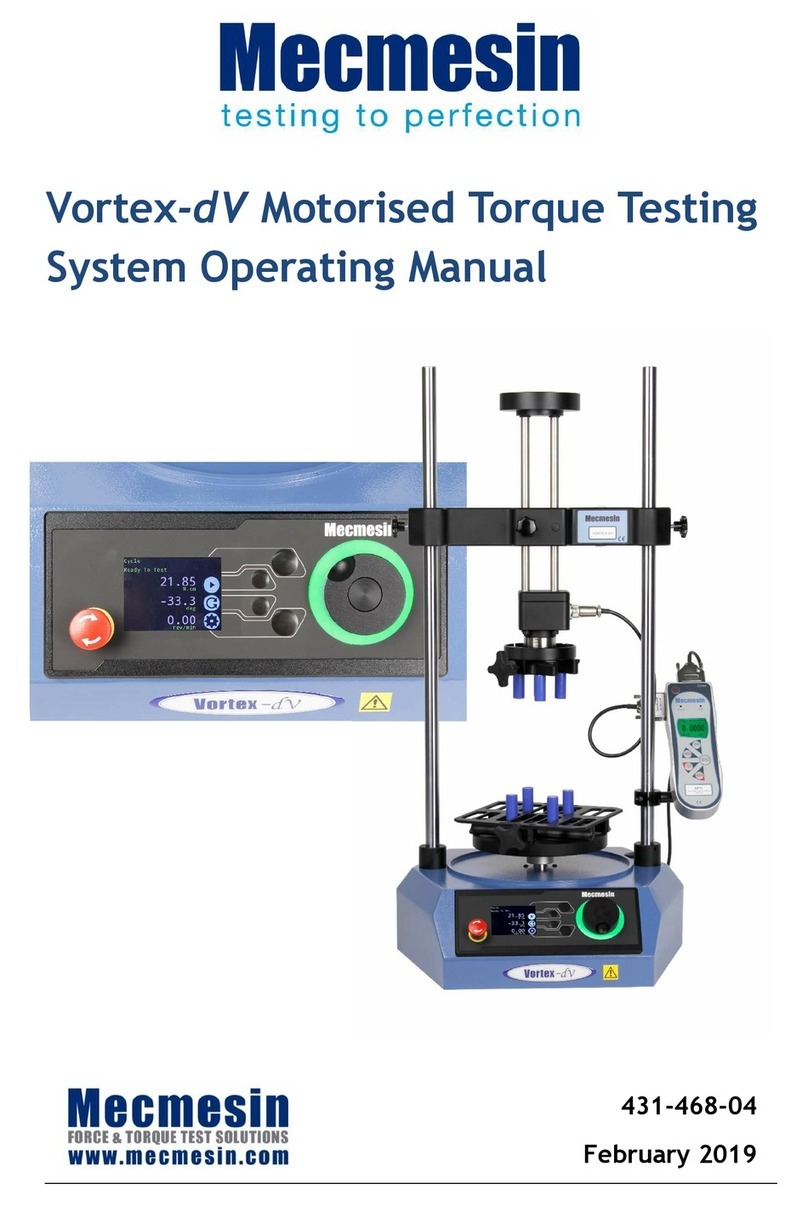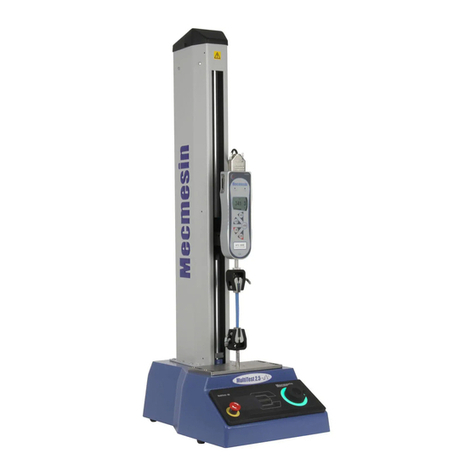Turn on the power to the Vortex by means of the rocker switch
at the rear of the base unit, the power LED (2) will illuminate.
The control panel of the Vortex has a rotary speed controller
(5) for both clockwise and anticlockwise rotation. Turning this
controller clockwise will increase speed, and turning it
anticlockwise will decrease it. Some test Standards place
particular requirements upon speed accuracy/reproducibility,
which may exceed the normal performance of the Vortex.
Under such circumstances calibration of each individual test
stand may be appropriate.
To rotate the lower mounting table, or whichever base fixture
is attached to the drive shaft adaptor (see (D), below), press
the green [Enable] button (7), then,
while still holding down
this button
, select either ‘Torque Applied’ or ‘Torque Released’
with the direction control switch (6) and
hold in this position
.
The base fixture will continue to rotate until one of the following
occurs:
a) The [Enable] button is released
b) The direction control switch is released
c) The power is disconnected
d) A pre-set alarm point is reached (see ‘Measuring &
Displaying Torque’, below)
The ‘two-handed operation’ of the Vortex is designed as a
safety feature to ensure that the operator’s hands are kept clear
of the rotating fixture.
Pressing the red [Emergency Stop] button (1) will, at any
time, cut power to the motor and stop the lower fixture rotating.
Power to the motor can be reconnected by twisting the button
either clockwise or anticlockwise.
It is advisable to check and
become familiar with the operation of the Emergency Stop
once the system is connected to the appropriate mains supply.
The LCD display on the control panel will allow either actual
speed (in revolutions per minute, i.e. rpm) or degrees of
rotation to be displayed. Pressing the [SEL] button (3) will
toggle between these two options. Angle and speed values
OPERATING
INSTRUCTIONS
Powering on
Speed Setting
Rotating the Lower Fixture
Note: that when ‘Torque
Applied’ is selected the base
fixture will be driven
anticlockwise, i.e. the upper
fixture will be twisted in a
clockwise direction relative to the
lower fixture.
Emergency Stop
Speed & Rotation Display
page 3






























